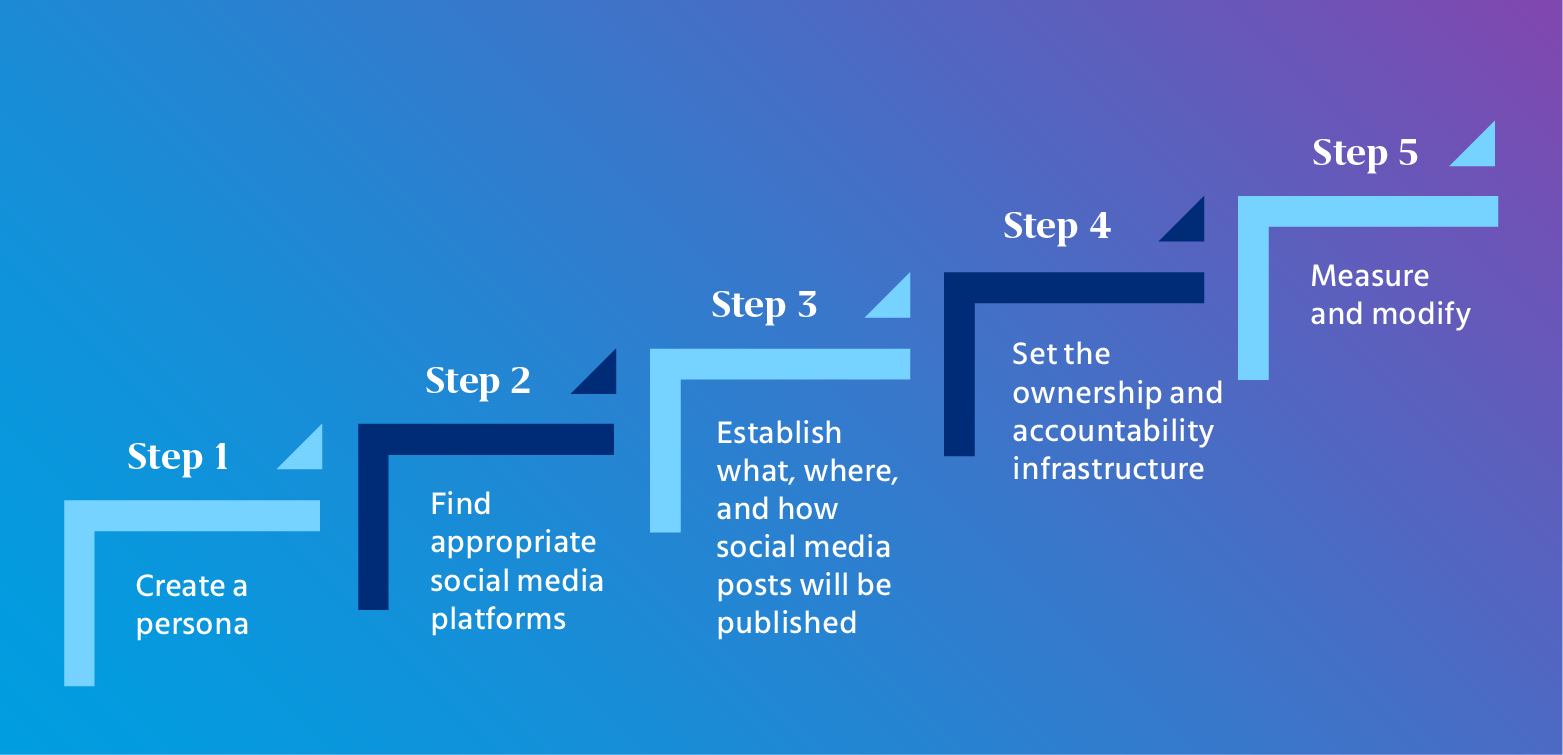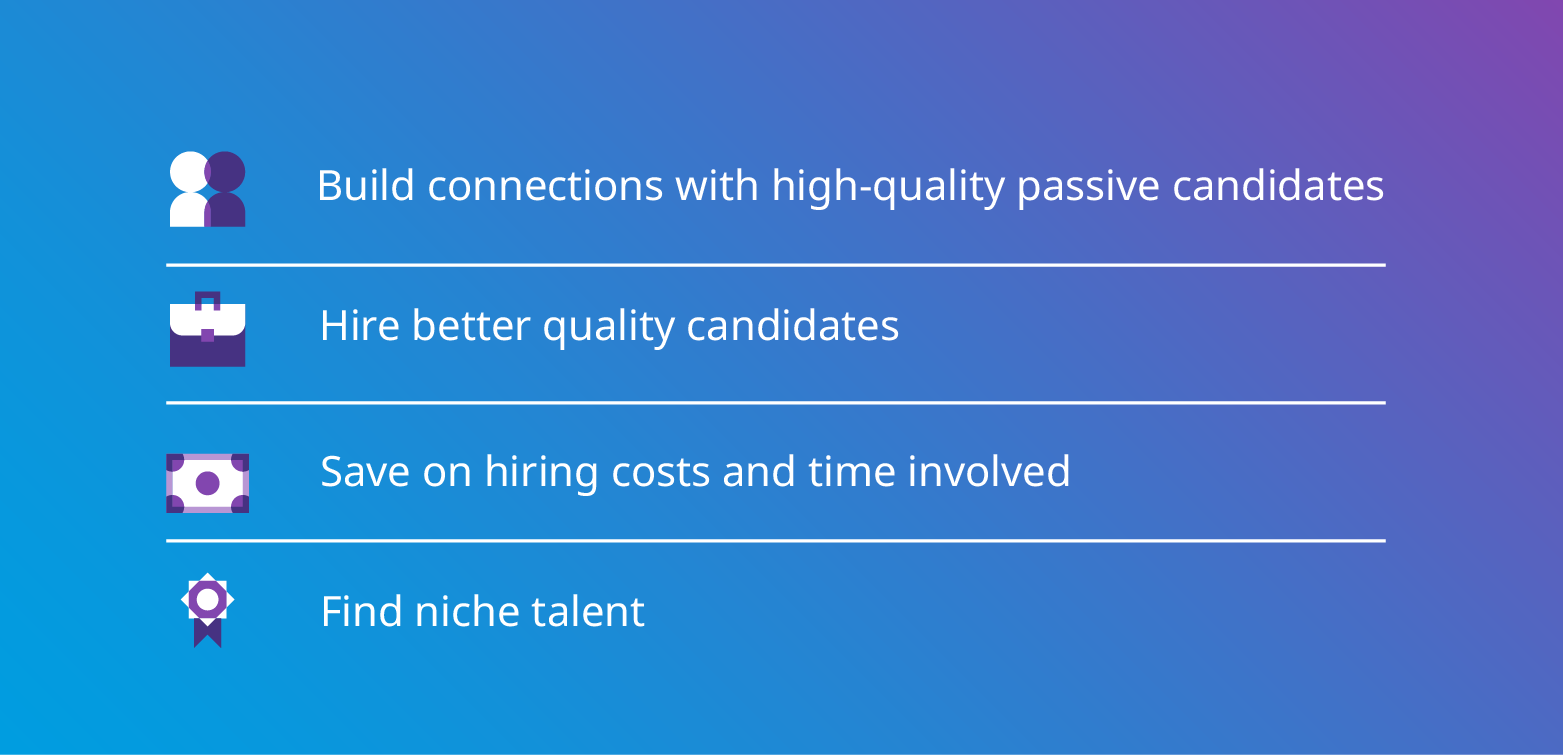Creating a winning social media strategy is an ongoing process that should evolve over time. Understanding market challenges, target groups, latest trends, etc., is essential to creating a successful social recruiting strategy.

Step 1: Create a persona
Before contacting a suitable candidate, understand and define the target applicant. Create a candidate persona or profile with a list of desired skills, knowledge, experience, etc. The more detailed it is, the easier the rest of the search will be.
If possible, create multiple personas with distinct profiles of differently skilled people who could perform well in the job role.
Step 2: Find appropriate social media platforms
The created personas will help gain a better understanding of the target group. Leverage this understanding to select social media platforms for finding culturally and technically fit candidates. Knowing where prospective hires are and how they use the platform helps define the direction of the recruitment strategy.
Step 3: Establish what, where, and how social media posts will be published
The top two platforms used for social media recruiting are LinkedIn and Facebook, and both have different guidelines for what companies can post, where they can post, and how frequently. Check the guidelines and platform requirements to plan a social recruiting strategy efficiently.
Step 4: Set the ownership and accountability infrastructure
Regardless of the social media recruitment strategy, planned interactions, and the number of platforms used for targeting, the hiring manager should be responsible for overseeing the implementation. Create a hierarchy and structure of experts and define the responsibilities each will carry out.
Step 5: Measure and modify
If hiring still takes time, revisit and modify the strategy for better performance. It is necessary to revisit and update the social media recruitment strategy according to the latest trends.
Some data to track are:
- Number of applications received per week per platform
- Number of applications that were suitable for the profile
- Performance rating (on average) of applicants, categorized by platform
- Average tenures of existing employees who were hired through the platform
- Assessment results of candidates (which can be used to gain further insight)









 Behavioral Competencies
Behavioral Competencies Cognitive Competencies
Cognitive Competencies Coding Competencies
Coding Competencies Domain Competencies
Domain Competencies































Would you like to comment?